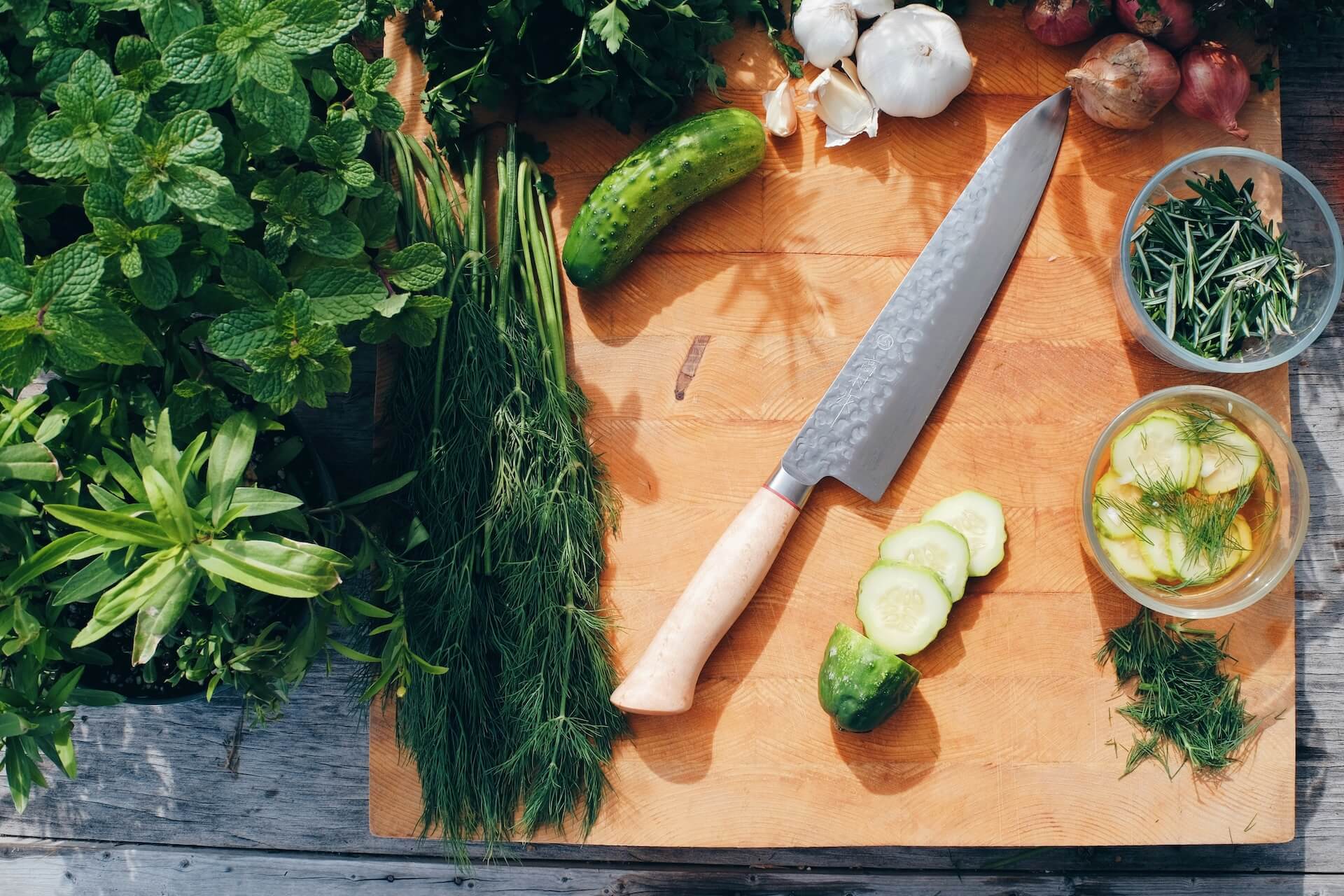Knife Skills
Good knife skills are the foundation of confident, efficient cooking. With just a few techniques, you can chop vegetables faster, slice meat more evenly, and keep your fingers safe in the process. Mastering knife handling isn’t about fancy tricks — it’s about building habits that make cooking easier and more enjoyable.

Choosing the Right Knife
For most tasks, a chef’s knife (20–25 cm) is all you need. It’s versatile enough for chopping vegetables, slicing meat, and even crushing garlic. Other useful knives include:
- Paring knife – small, precise cuts and peeling
- Serrated (bread) knife – bread, tomatoes, and other delicate foods
- Cleaver – powerful cuts through bones and tougher vegetables
- Fillet knife – flexible blade, ideal for fish and delicate meats
- Utility knife – a smaller, lightweight alternative to the chef’s knife for quick jobs
A good knife doesn’t have to be expensive, but it should feel balanced in your hand and hold a sharp edge.
The Proper Grip
Hold the knife with your thumb and index finger pinching the blade just above the handle, while the other fingers wrap comfortably around the handle. This “pinch grip” gives you more control and reduces fatigue compared to holding the knife by the handle alone.
Essential Cutting Techniques
- Chopping – straight up-and-down cuts, perfect for herbs or small vegetables
- Dicing – cutting food into small, uniform cubes. Great for onions, carrots, and celery
- Julienne – thin matchstick strips, often used for carrots or bell peppers
- Mincing – fine chopping, commonly for garlic, ginger, or herbs
- Rocking motion – resting the knife tip on the board and rocking back and forth for fast, controlled chopping
Safety Tips
- Always use a stable cutting board — place a damp towel underneath to prevent slipping
- Keep your fingers tucked under using the “claw grip,” with knuckles guiding the blade
- Focus on sharpness, not force — a sharp knife is safer than a dull one
Maintaining Your Knives
- Hone your knife regularly with a honing steel
- Sharpen every few months with a whetstone or professional service
- Hand wash and dry immediately — avoid dishwashers
- Store knives in a block, magnetic strip, or protective sheath to prevent dulling
Conclusion
Knife skills aren’t just about speed — they’re about precision, safety, and confidence. By learning a proper grip, mastering a few core cuts, and keeping your knives sharp, you’ll cook more efficiently and enjoy the process a lot more.
Further Reading
- Chef’s Knife: The Most Important Kitchen Tool
- Serious Eats: Knife Skills — comprehensive how-tos and cut demonstrations
- BBC Good Food: Knife skills video — a practical visual guide to safe cutting techniques